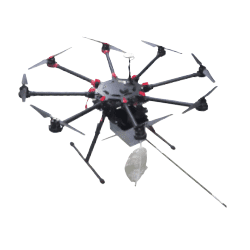Search WikiOdour by Keyword
Direct Olfactometry
Overview
Measurement of odour without a time lag between sampling and analysis. The time lag between sampling and analysis according to EN13725 is 30hours and according to the VDI3880 is 6 hours. This is to prevent the degradation of odour concentration. Ambient odour monitoring using a device that samples the air at specified dilutions is an example of direct olfactometry.
Source sampling and immediate measuring of odour concentration, equivalent to dynamic sampling or on-line olfactometry. It is advantageous when compared to delayed olfactometry as it minimizes the risk of sample modifications due to storage and transportation. This technique is not currently applied in the UK. Direct olfactometry can be very expensive due to the need for panellists to travel to the site of an odour event and the risk that the presence of the test person at the site may affect their response.
Field Olfactometry Advances
Recent advancements in field olfactometry such as the introduction of SM100i, have made this method more feasible and considerably more economical than delayed olfactometry.
This technique can also be used as a proactive monitoring tool providing real-time analysis.


